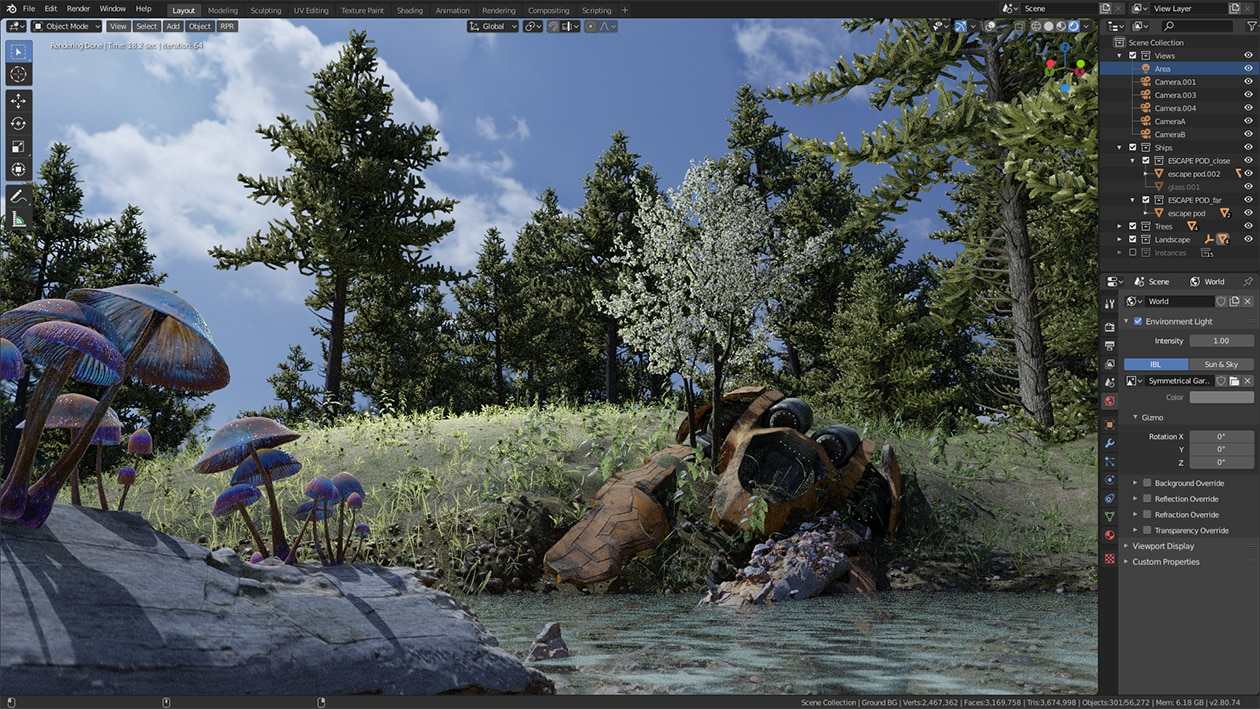

The render settings will change depending on the render engine that you had previously selected.

Blender animation render 720p#
If your project does not require you to render at an ultra high resolution then you should not.ġ080p is the standard resolution for both images and animations, but consider if you can go as low as 720p depending on the project requirements. For Starters, the resolution of the animation is one of the most notable influencers on the render time of each frame, especially when using cycles.Ī 4K animation will look very sharp and is great to add to your portfolio of work but the render times will be substantial.

The target resolution is another important factor to consider before clicking on that render button. Ultimately it comes down to a battle of time vs quality, and which is more important to you as an artist.Īssigning The Render Settings And The Target Resolution? The longer the animation length, the more notable the impact of switching to Eevee becomes. So it would only take 5 minutes to render the animation. So if we recalculate the length of the render with Eevee, that’s 5 * 60 = 300. that render time of 1M 30S is based on cycles, but that same scene may only need 5 seconds to render in Eevee, and that’s with added effects like ambient occlusion and depth of field. Take our example of a 60 frame animation of the bar eating its honey. Eevee is built for speed at the expense of quality, but can still look excellent with the right settings. While it may sound here like cycles being the obvious choice this is not always the case. That comes to around 90 minutes in this case, all for a render that might only be a couple of seconds long.Įevee is more used for the purpose of previewing your scenes and projects as well as preparing those objects for use in other applications like game engines.Ĭycles on the other hand is built for realism and is focused on producing professional-grade renders of your projects with lighting and material applications based on real-world properties. Now say you wanted to create a 60 frame animation of the bear eating his honey.īecause Blender will render each frame one by one, you have to multiply the total time it took to render a single image by the total number of frames. The total render time is 1M 30S for the image, which is not too long. As such the 1st difference that you will note is that animations take FAR LONGER to render, depending on the number of frames used.įor example, you render a single image of a bear sitting on a tree stump, eating from a jar of honey. Animation is basically rendering multiple images in a sequence, and each of these images are referred to as frames. In truth, they both follow the same principles when it comes to rendering. What Is The Difference Between Rendering An Image And An Animation? But there is a lot more to think about if you want to create the ideal animation for your project. Simply rendering an animation is just as easy as rendering an image and can be done with a couple of button presses. Make sure to set the start and end frames of the animation correctly, and also use the correct output settings for the render. To render an animation in Blender, you can go to Render > Render Animation in the header bar of the user interface, or you can use the hotkey of Control + F12 to also begin rendering the animation. Rendering an animation involves the same steps but there are a few added layers on top that we need to know about to render animations correctly. Rendering an image in Blender involves creating a 3D scene, positioning the camera, and then using the camera data to produce a rendered picture of the scene from the camera’s perspective.


 0 kommentar(er)
0 kommentar(er)
